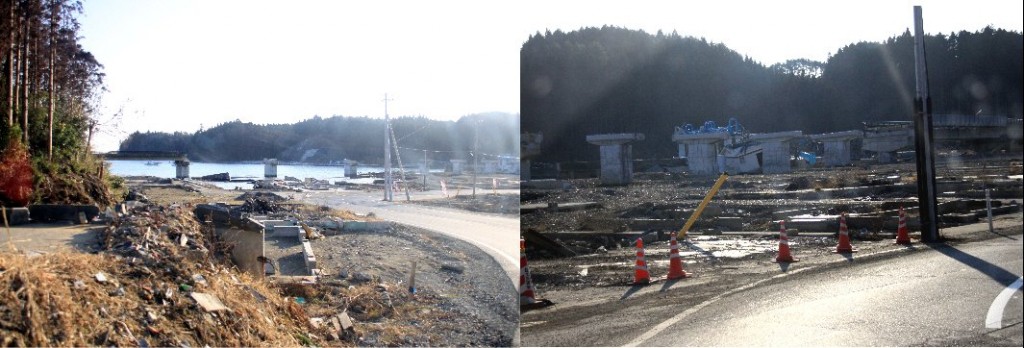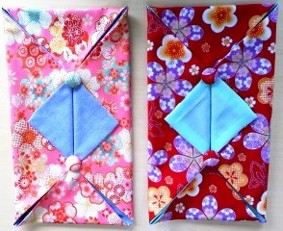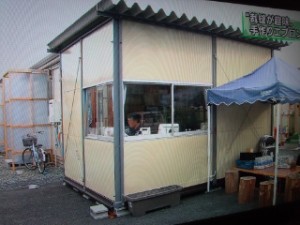
In the previous post, Japanese social fashion businesses were introduced, all of which had essential parts of their supply chain outside of the country itself.
In this post, I will look into some of the initiatives taken by fashion organisations and businesses in order to relieve the long-term effects of the March 11, 2011 Tsunami that hit northern Japan. In many cases, nothing more than a trial run has been completed so far, but cautious hopes are in place as all organisations have made long-term promises.
The overall situation in the tsunami stricken areas:
- Clean up has largely finished. Remaining debris, which could potentially contain personal belongings of victims has been moved to other locations. Volunteers keep searching them for personal remains such as photographs or toys.
- All what is now left from the towns are concrete fundaments of the buildings swamped away by the tsunami, and the occasion building skeleton, built after the Kobe earthquake from 1995, and where only the broken windows and empty interiors suggest them being witnesses to the catastrophe.
- All affected families and individuals have been moved into temporary housing compounds. The assignment happened by lottery draw, and as a consequence whole communities have been ripped apart in the process. The price paid has been high: although hardly heard of in the news, suicides have occurred in all emergency housing estates, on several instances even on one than more occasion.
- The emergency housing basically consists of a large container subdivided on the inside into hallway with kitchen, toilet, and one to two rooms. Some have baths, but equally as often gender separated public baths – Sento in Japanese, and common place in times before every house had a bath room – are made available to the residents.
- The emergency shelters are by now – between 3 and 6 months after the residents moved in – equipped with the basics of modern life, and charities have seen to that the residents were provided heaters and heating blankets.
- The emergency housing complexes vary in size, and can consist of a few dozen units to a couple of hundred units. They are normally located in fairly remote location – even for an area which is considered ‘country side’ – and not easily accessible. In Minamisanrikucho, the area where I spent a week volunteering with a local NGO, the closest pub was a 40 minute drive by car, and the closest supermarket a good 20 minutes by car. The emergency housing complexes only, if at all, have access to a convenience store. Once or twice a week ‘mobile supermarkets’ make the rounds offering basics, of doubtable quality and inflated prices.
- The majority of residents of the emergency housing estates are over the age of 50, and most do not own a car or other means of transport. There remain fairly few families with children or people of working age – those that have survived the catastrophe but lost everything else, have escaped to cities such as Tokyo, Osaka, Sendai, Aomori, where there are more opportunities in search of better paid work and a future.
- The local fishing industry is starting up again, including the canning factories. However, full time salaries paid are so low – around 120’000 yen monthly, equivalent to €1200 or about £1000 – that it is impossible to raise a family on it, or rebuilding a life for that matter, even before even considering that many are stuck with pre-tsunami mortgages and loans. Once the government benefits will end – scheduled to be the case by the end of March – these jobs however will go to the lucky ones: There isn’t enough work to go around for all those that need to sustain themselves.
Fashion related ‘social business’ projects providing income and support [Note: Info mostly in Japanese only]:
There are various initiatives that have caught the spotlight of the public eye or that are talked about in one way or another amongst NGOs and fashion business alike. The ones presented hereafter are very likely only a selection of what in reality is taking place.
However, what becomes clear at first glimpse is that at this early stage – which it is in terms of business development even if it is nearly a year since the tsunami – the product quality and types available is still lacking. The initiatives are certainly fulfilling their aim of keep people busy and allowing them to generate some income for their house hold. But, possibly with exception of the Miracle hat project and the Avanti Granma project, their long-term sustainability remains to be proven.

- Tohoku Granma Christmas ornament project by Avanti (more details, also in Japanese, with full list of sales outlets, available from here).
Avanti had grand mothers, now living on their own in temporary housing estates, make Christmas ornaments from off cuts and waste pieces stemming from their ‘Pristine’ fashion line.
The ladies initially were inexperienced in this type of handicraft, many of them had been employed earlier in their lived in the fishing industry or in farming. Coming together on a regular basis to work on the project, not only there was a product created appreciated in the Japanese market, but also new social connections, often completely lacking on the estates, where fostered.
The project participants stem from 4 different tsunami affected areas: Kuji and Rikuzentakada in Iwate prefecture, and Minamisanriku and Ishinomaki in Miyagi prefecture.
The project will continue throughout the year, making in addition for decoration for specific occasions such as Christmas and Easter, Omamori, a type of good luck charm habitually sold throughout Japan in temples and shrines.
Avanti has committed to run the project for a duration of 10 years at least. - The East-Loop project by Love & Sense.
Broadly based upon the same idea as the Granma Project, it aims at creating basic income for the producers, while bringing them together socially, and creating in this way new social support networks crucial for survivors to tackle their future head on rather then to shed tears over the past they lost.
The creations launched and sold up until now are simple to make, and relatively simple to sell not the least due to their low price: brooches of various types and colours, hand crocheted by ladies in the tsunami affected areas of Rikuzentakada, Iwate prefecture, and Ishinomaki, Miyagi prefecture. - The Miracle Cap (more information, also in Japanese here, and here) is a collaboration of a cancer survivor-turned-hat-designer, with the survivors of the tsunami and the aftermaths of the nuclear reactor fall out in in Soma city, Fukushima prefecture.
The designer had previously come up with the idea to design multifunctional caps and head scarves for women who lost their hair due to chemotherapy treatment. The tsunami, and the subsequent troubles with the Fukushima nuclear reactor triggered her to seek out women in the Soma area, in fairly close neighbourhood to the reactor, willing to work with her on producing the head scarves and caps for sale.
Each cap thereby can be worn in 7 different ways, and is sold at a price of 2000 yen (£18, €20). - The Makenai-Zo (We’ll never give up) project (latest news here)
“Makenai-Zo” means “We’ll never give-up” in Japanese , and “Zou” also means “Elephant”. Makenai-zo is the cute elephant-shaped hanging towel made by the sufferers of earthquakes & other natural disasters in Japan. The project of making this towel started after Kobe Earthquake in 1995. The project was then established to create work and motivation for the quake survivors.
After that, Makenai-zou Project has been relayed from Kobe to Niigata which was by a hit by a strong earthquake in 2004, and now in 2011/12 is made by victims of the 03/11 East Japan tsunami.
Each elephant costs 400 yen, out of which 100 yen are paid to the person- resident in the disaster area – who actually makes it, and the rest (300 Yen) per one Makenai-zo are used to support the recovery progresses of the victims of East Japan Big Earthquake. The elephants are currently made by people living in Otsuchi-cho in Iwate Prefecture, Kanuma in Tochigi Prefecture, and Yonezawa in Yamagata prefecture.
However, at this point, towels are hard to come by in the stricken areas, and the organisation is calling for towels to be donated. - Asante Santa‘s (ニットプロジェクト, more here)
After a call of donation for unused knitting wool across the nation, the project enlisted a knit wear designer and women hand knitters from Iwate prefecture.
Buyers would, essentially, buy a surprise collection of hand knitted goods for the equivalent of €300 (30’000 yen), 2/3 of which would go as salary to the knitter and 1/3 would serve to support the knitters with e.g. providing transport and to pay the designer.
The designs would be available for advanced as well as knitting beginners. Each customer would receive a set of different items useful for the winter, and knitted by knitters of various skill levels.
While there is no further need for wool to be donated, the project is continuing successfully through the winter months. - Fumbaro Tohoku‘s Sewing Machine, Hand-made, and Zori projects.
The organisation works for their textile related projects exclusively in Minamisanriku, Miyagi prefecture. The area is one of the most heavily affected areas as it is full of small bays squeezed between hills, which doubled, sometimes even tripled the force, and height, of the tsunami.
The organisation has made a pool of sewing machined available to local women, who then make Bags-for-live (eco bags), and Japanese shop curtains (noren). All these items, together with the Japanese style slippers hand made by a different group of home workers, and available via Etsy in countries outside Japan.
The third project, hand-made, is given life through 300 different people in the region, among them also men, who crochet or knit small accessories. Already larger results are available as well by more seasoned knitters, among them hats, mittens and similar winter items. - Shanecha (しゃねっちゃ) (see also their blog here, and their local temple’s blog) is a group of 3 retired ladies, all of them at least in their 70s, who all live in the same temporary housing estate. The brand (yes! it officially is a brand) was founded in September 2011, and is named after how the local dialect pronounces the words ‘shikataganai’ (しかたがない; Engl: it can’t be helped). They upcycle mostly old, donated Kimonos and Yukatas into cosmetic bags, aprons, winter house jackets typical for Japan. However, all the ladies, and the associated helpers that cover for larger orders where needed, are expert hand-crafters be it at the sewing machine, or with the crochet hook. They do get orders from across the country down to the tropical Okinawa islands, and even from Japanese shops in the states.
- Umi no Niji (海の虹; Japanese for ‘rainbow of the sea) has been launched similar vain as Shanecha, and by women of the same community. They create small, simple, cute looking products – with a special twist in their design – for daily life.

Tissue Box cover from Umi No Niji
As material, they use donated clothing that was in unusable condition, donated left over fabrics, recycled kimonos etc. From pin cushions, to tissue box covers, money jars, toilet roll covers they make items that are common place in Japanese house holds.
In addition to generating income, the aim of this project is also to give women something to do with their hands and hence time to come to terms with what happened to them and their loss. The average age of the brand members is around 50 to 60 years of age, and in that sense nearly a generation younger than the members of it’s sister brand Shanecha.


